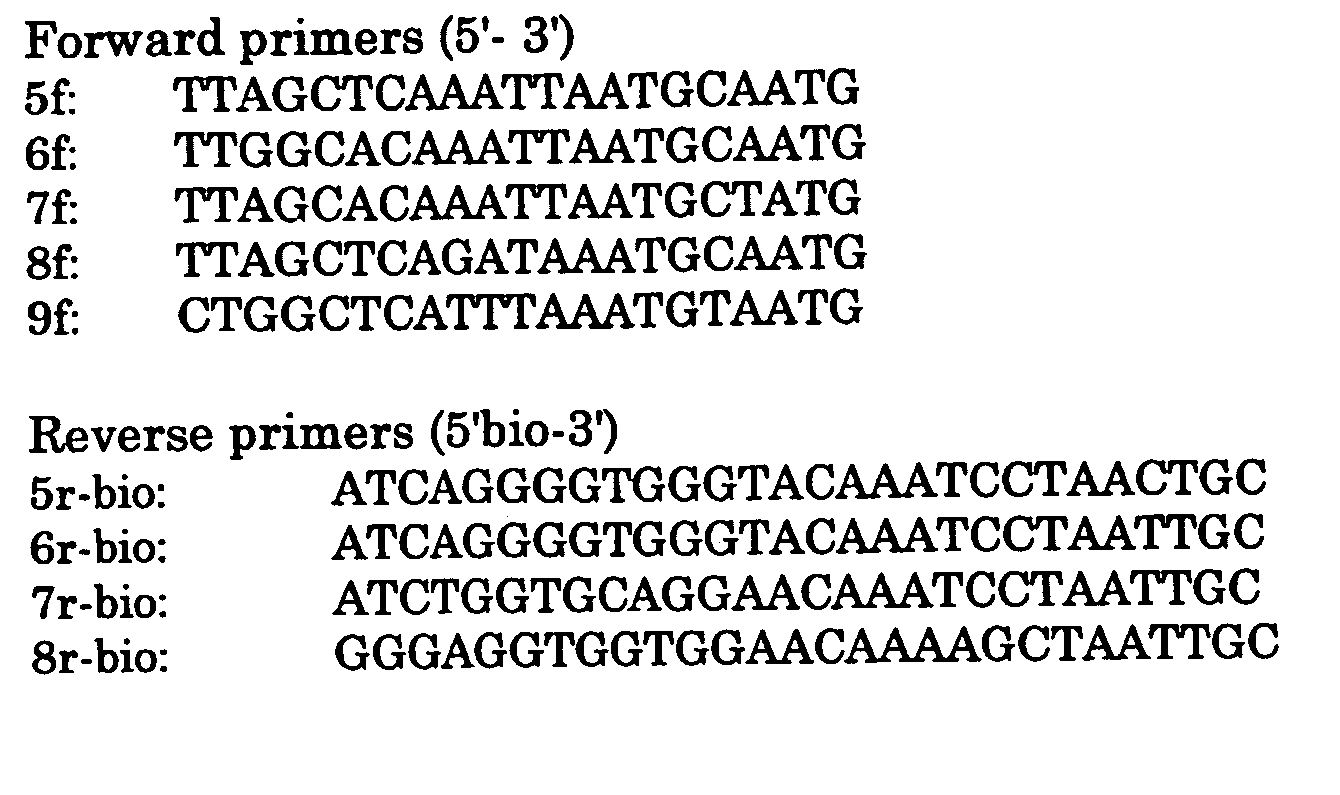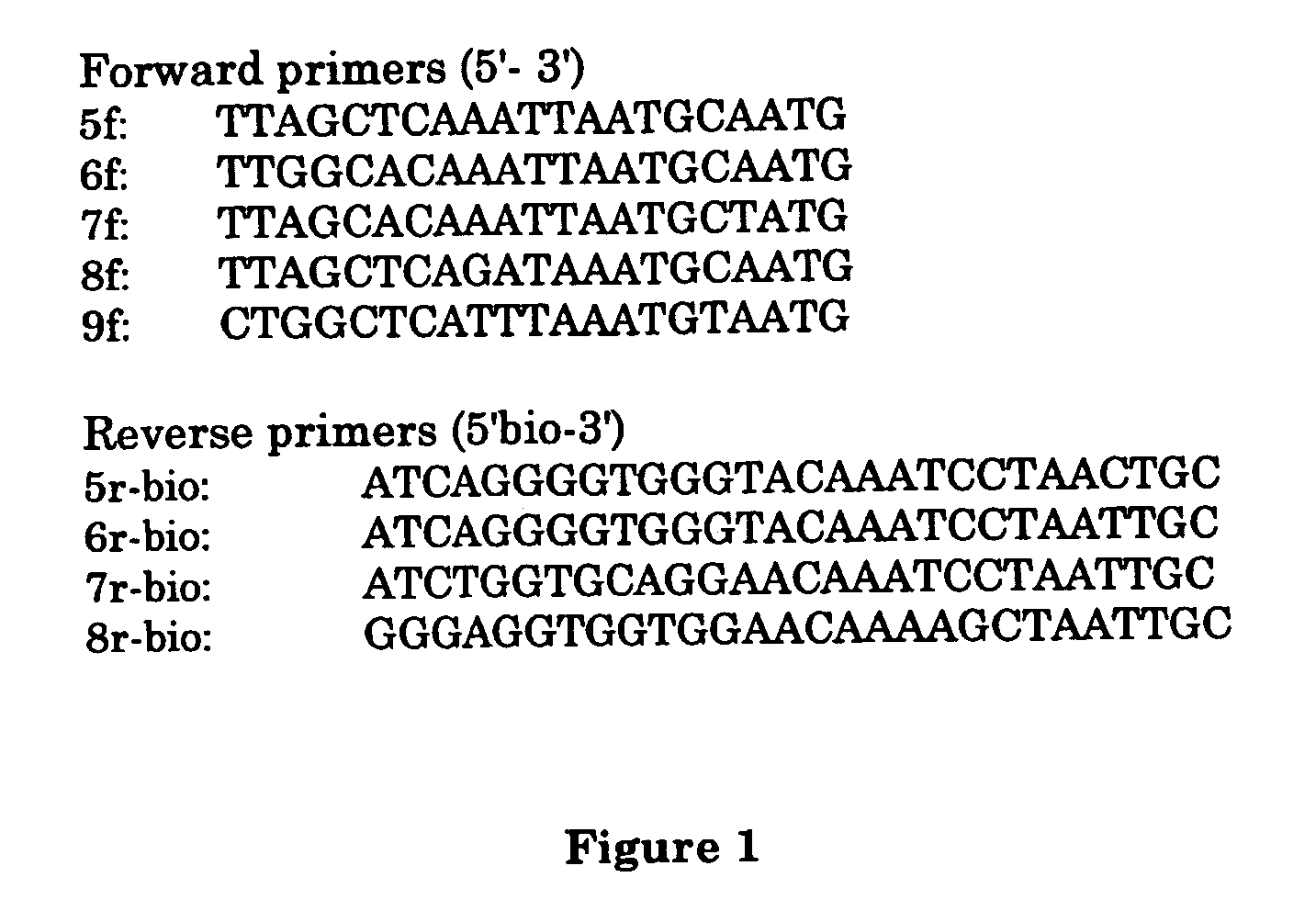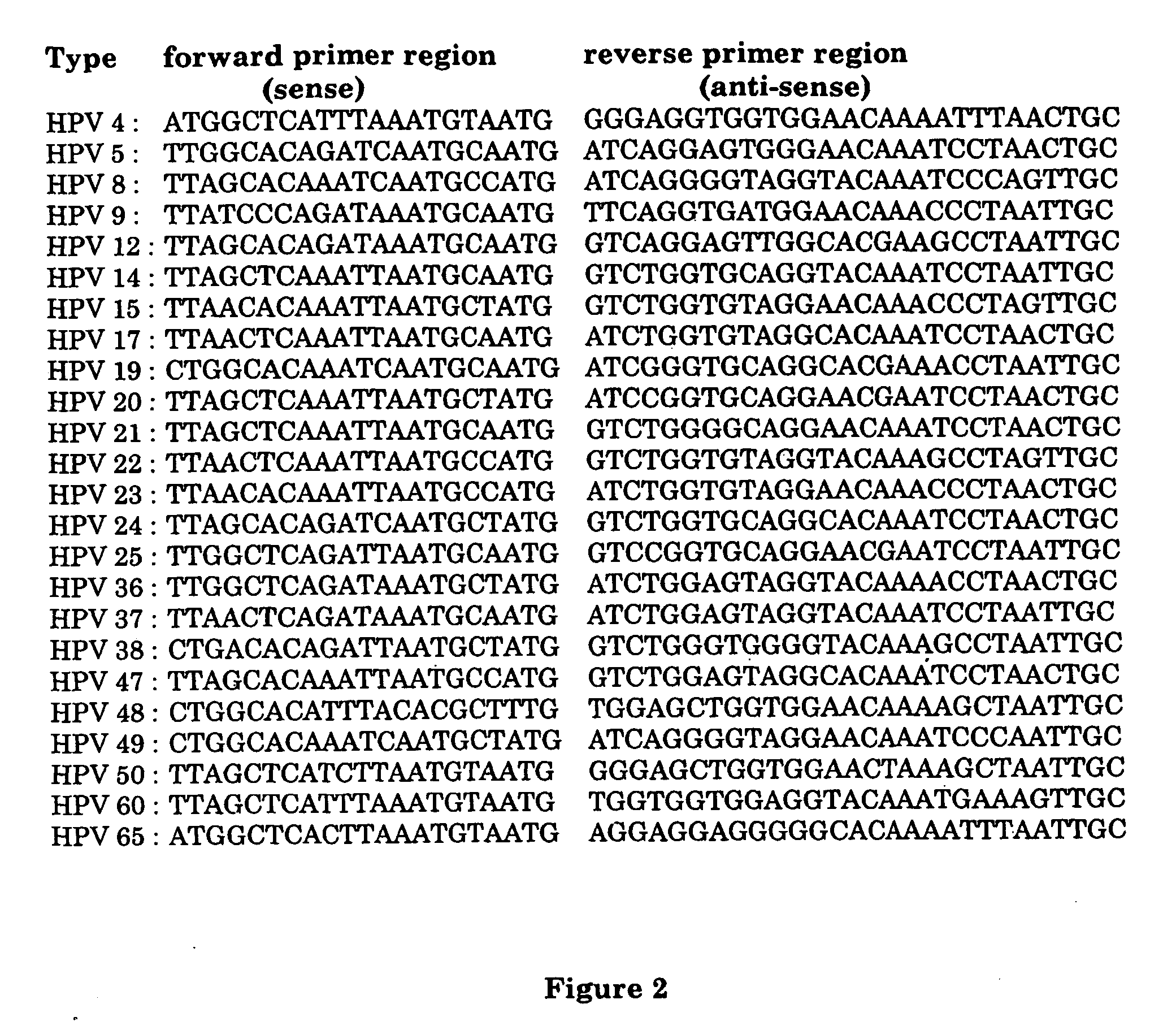Method for detecting and typing of cutaneous hpv and primers and probes for use therein
a human papillomavirus and typing technology, applied in the field of human papillomavirus detection and typing, can solve the problems of cutaneous hpvs, cancer in genetically predisposed individuals, and no medical cure to eliminate papillomavirus infections, etc., and achieve the effect of facilitating alignment of sequences
- Summary
- Abstract
- Description
- Claims
- Application Information
AI Technical Summary
Benefits of technology
Problems solved by technology
Method used
Image
Examples
example 1
[0089] Amplification of HPVs of supergroup B, EIA detection and RLB typing.
Methodology
HPV Test Panel.
[0090] For the evaluation of the sensitivity and specificity of the RLB typing method, plasmid clones of the following HPV types were used as test panel: HPV 4, 5, 8, 9, 14, 17, 19, 21, 22, 23, 25, 36, 38, 49, and 50.
Clinical Specimens.
[0091] For the evaluation of HPV detection and typing on clinical specimens, formalin-fixed, paraffin embedded tissues of skin samples were used. A series of 5 μm sections were cut using the so-called sandwich method (Walboomers et al., 1999, J. Pathol. 189:12-19). Briefly, outer sections were haematoxylin-eosin stained for histological analyses, whereas inner sections (in total approximately 1 cm2 of tissue) were placed into a tube and used for PCR purposes. 250 μl lysis mix (10 mM Tris-HCl (pH 7.5), 0.45% Tween 20 and 500 μg proteinase K (Roche, Mannheim, Germany) ) was added and incubation was performed overnight at 37° C. The sample was boi...
example 2
Analysis of Formalin-Fixed Clinical Specimens
[0098] The amplification of cutaneous supergroup B HPV DNA was tested using the materials and methods described in Example 1 except that DNA was used that was isolated from formalin-fixed and paraffin-embedded tissue samples from 87 cutaneous specimens that showed good DNA quality (i.e. positive samples in a beta-globin PCR). These samples included 59 samples of renal transplant recipients, comprising 21 cases of squamous cell carcinoma (SCC), 23 cases of basal cell carcinoma (BCC) and 15 cases of actinic keratosis (AK). Another 29 samples were obtained from immunocompetent patients, comprising 13 cases of SCC, 12 cases of BCC, and 4 cases of AK.
[0099] EIA detection with generic supergroup B probes revealed positivity in 62% of the cases: 76% of specimens from renal transplant recipients and 34% of specimens of immunocompetent patients. These included 15 out of 21 cases of SCC (71%), 15 out of 23 cases of BCC (65%), and 14 out of 15 ca...
example 3
Analysis of Formalin-Fixed Clinical Specimens.
[0101] An additional 42 non-melanoma skin tumors of renal transplant recipients was analysed for amplification of cutaneous supergroup B HPV DNA as described in example 2 except that all PCR products were analysed by both EIA and RLB. EIA detection with generic supergroup B probes revealed positivity in 67% (28 out of 42) of these cases whereas RLB revealed positivity for at least one of the 24 HPV types tested in 88% (37 out of 42) of the cases. The HPV types detected included the following 18 types: HPV 4, 5, 8, 9, 12, 14, 15, 19, 20, 21, 23, 24, 25, 36, 37, 38, 48, and 49. In descending order the following HPV types were most prevalent: HPV 20, 4, 5, 25, 15, 23, and 14. Also in this series many multiple HPV infections were found. These data suggest that RLB is more sensitive than EIA.
PUM
| Property | Measurement | Unit |
|---|---|---|
| Nucleic acid sequence | aaaaa | aaaaa |
Abstract
Description
Claims
Application Information
 Login to View More
Login to View More - R&D Engineer
- R&D Manager
- IP Professional
- Industry Leading Data Capabilities
- Powerful AI technology
- Patent DNA Extraction
Browse by: Latest US Patents, China's latest patents, Technical Efficacy Thesaurus, Application Domain, Technology Topic, Popular Technical Reports.
© 2024 PatSnap. All rights reserved.Legal|Privacy policy|Modern Slavery Act Transparency Statement|Sitemap|About US| Contact US: help@patsnap.com










